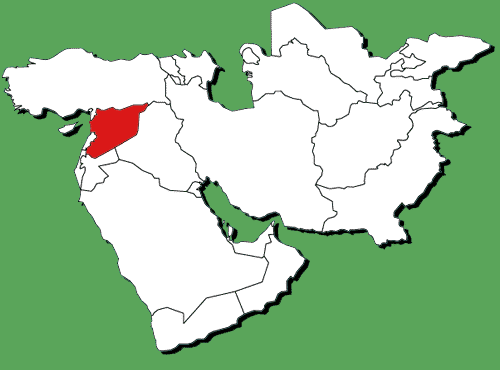
Circle the area on this map

D. Damascus is one of the oldest cities in the world. Carbon-14 dating at an archeological site on the outskirts of the city suggests that the area has been occupied since around 6300 BC. Another ancient city, Aleppo, is Syria's largest with 2.9 million people.
B. Syria's constitution was adopted in 1971 and defines the nation as a secular republic with Islam recognized as the majority religion.
B. Syria sent 40,000 troops into Lebanon in 1976 during a civil war which also involved troops from Israel, the United States and France.
A. During World War I, French and British diplomats secretly agreed how to carve up the Turkish Ottoman Empire, an ally of Germany. France's "zone of influence" included Syria and Lebanon.